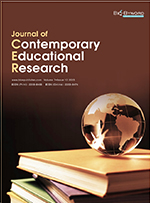Abstract
With the advent of the artificial intelligence (AI) era, there is a need to create a more flexible and humanistic educational ecosystem to adapt to the changes. Education needs to move from a unidirectional focus on skills to the cultivation of creative “whole people.” Due to the non-standardized evaluation system of the art discipline, its education has a unique advantage for the cultivation of students’ creativity. At the same time, the interdisciplinary integration of fine arts points to the educational goals in the era of AI and the educational requirements for cultivating students’ core qualities in China. Therefore, this paper analyzes the theoretical basis and developmental evolution of interdisciplinary integration, studies the significance of interdisciplinary integration in art education from the three levels of students, teaching, and disciplines, and explores four effective paths to realize interdisciplinary integration in art education in the era of AI. In this way, students can realize the contextualized analysis of knowledge, in-depth understanding of the content of the discipline, and accurate expression of the spiritual values embedded in art interdisciplinary learning. The ultimate goal is to cultivate students’ ability to solve complex problems, promote the development of students’ free personalities, and respond to the national education requirements.
References
Zhong Q, 2001, Basic Views of the “Holistic Education” Trend. Global Education Outlook, 2001(09): 11–18.
Zhang H, 2022, Empowering Students to Grow through Creation - Core Concepts of the Compulsory Education Curriculum Plan and Curriculum Standards (2022 Version). Fujian Education, 2022(27): 7–9.
Goodrich RA, 2014, Teaching Visual Culture: Curriculum, Aesthetics and the Social Life of Art, Kerry Freedman (2003). Journal of Visual Art Practice, 7(1): 95–100.
Li L, 2009, Toward Diversified Art Teaching, Hunan Fine Arts Publishing House, Changsha.
Lv L, 2020, The Connotation and Implementation of Macro-concept Curriculum Design. Education Research, 41(10): 53–61.
Lan G, Du S, Song F, et al., 2023, Generative Artificial Intelligence Education: Key Controversies, Promotion Methods, and Future Issues - Key Points and Reflections on UNESCO’s “Guidelines for Generative Artificial Intelligence Education and Research Application.” Open Education Research, 29(06): 15–26.
Liu Q, 2023, The Driving Force, Vision, and Path of AI Empowering Innovation in Art Education. Art Exploration, 37(04): 56–60.
